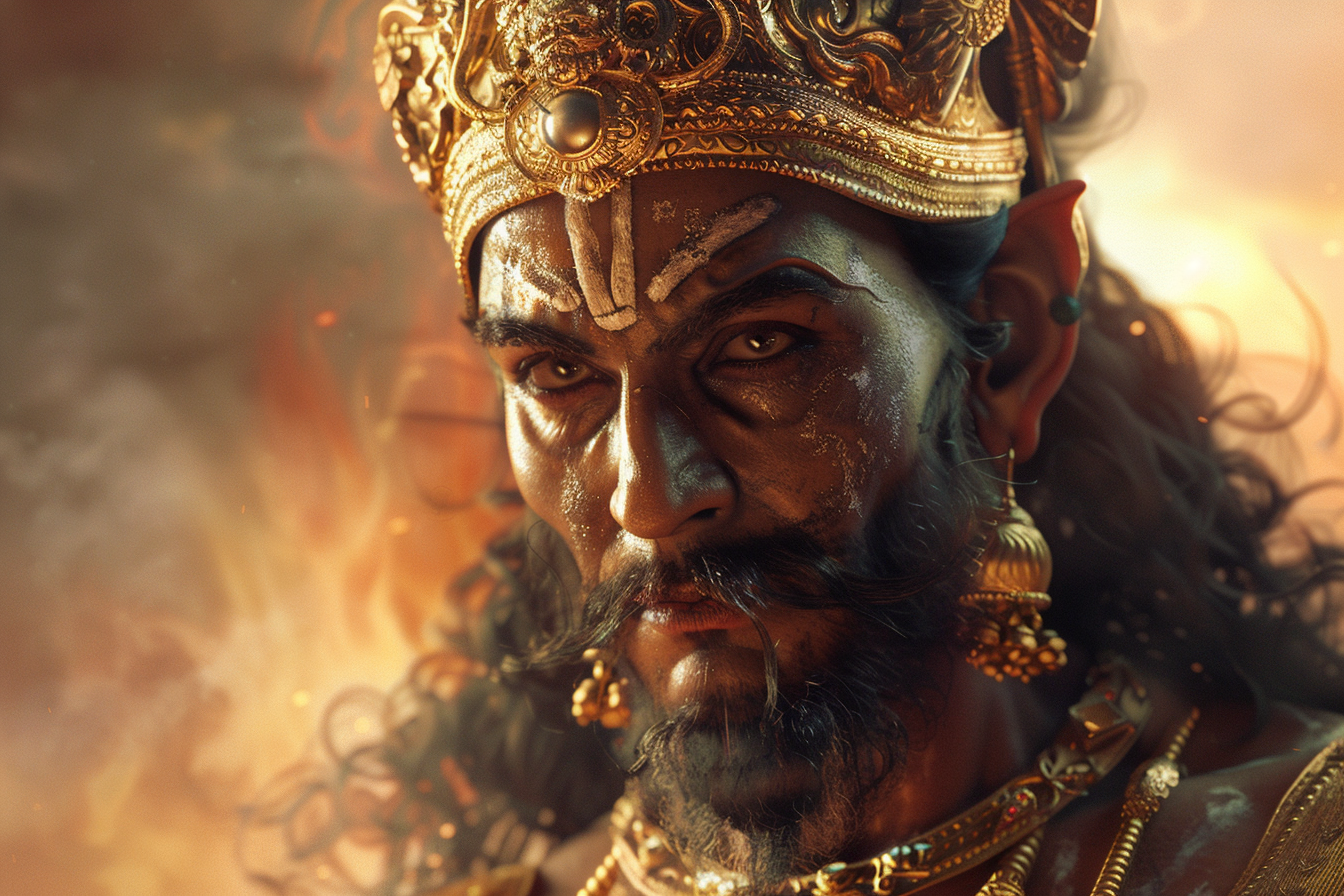Maveli / Mahabali, the mythical king adored by his subjects in Kerala, ascends from the netherworld every year to visit his people during the grand festival of Onam. This blog delves into the fascinating story of this beloved Asur king, his extraordinary reign, the dramatic encounter with Lord Vishnu’s Vamana avatar, and the legacy that continues to be celebrated today.
Who Is Mahabali?
Mahabali, also known as Maveli, was an Asur (demon) king celebrated for his just and benevolent rule. The original name of Mahabali signifies “great strength” and “supreme sacrifice.” He was the grandson of Prahlada and the son of Virochana. Despite being an Asur, Mahabali was a devout follower of Lord Vishnu and is remembered for his unparalleled generosity and fairness.
King Mahabali’s Golden Reign
During Mahabali’s rule, Kerala witnessed its golden era. His reign was marked by equality, prosperity, and happiness. There was no poverty or crime, and people lived in harmony, free from caste and class discrimination. This period of peace and justice is fondly remembered and celebrated by Malayalis through the festival of Onam.
The Vamana Encounter: The Turning Point
Mahabali’s growing fame and power worried the Devas (gods), who sought Lord Vishnu’s help to curb his influence. Vishnu incarnated as Vamana, a dwarf Brahmin, and approached Mahabali during a yagna. Vamana asked for three paces of land, which Mahabali readily granted. However, Vamana grew to a colossal size, covering the earth and sky with his first two steps. Realizing the boy’s divine nature, Mahabali offered his head for the third step, signifying his ultimate sacrifice.
Mahabali’s Departure to the Netherworld
With the third step, Vamana sent Mahabali to Pathala (the netherworld). However, Lord Vishnu, moved by Mahabali’s devotion and righteousness, granted him the boon to visit his people once a year during Onam. This act symbolizes Mahabali’s enduring bond with his subjects and the deep affection they hold for him.
Is Mahabali Still Alive?
While Mahabali’s physical reign ended with his descent to the netherworld, his spirit lives on. Each year, during the festival of Onam, the people of Kerala welcome their beloved king with open hearts, celebrating his visit with grand feasts, traditional dances, and intricate floral arrangements.
The Legacy of Onam
Onam, celebrated over ten days, is a vibrant festival that marks Mahabali’s annual visit. The second day, Thiruvonam, is the most significant, believed to be the day Mahabali visits his subjects. The festival includes various cultural events, games, and the famous Onam Sadya, a lavish feast that reflects the prosperity of Mahabali’s reign.
Mahabali in Folklore and History
The story of Mahabali is not just a legend but a significant part of Kerala’s cultural heritage. It is mentioned in ancient texts like the Kerala Mahatmyam, Brahmandapurana, and works like Pathupattu and Madurai Kanji. His story is also a poignant reminder of the cyclical nature of power and the ultimate triumph of righteousness.
The Controversy: Mahabali and Vamana
The narrative of Mahabali and Vamana also highlights the power dynamics between the Devas and Asuras, symbolizing broader themes of cosmic order and compassion. Some interpretations suggest that Mahabali’s story reflects the Aryanization of Kerala and the struggle between different cultural identities.
Celebrating Mahabali’s Legacy
Mahabali’s story, from his golden reign to his annual visits, continues to inspire and unite people. Onam stands as a testament to his just and benevolent rule, reminding us of an ideal time when everyone lived in harmony. As Kerala lights up with festivities each year, Mahabali’s legacy of generosity, fairness, and devotion lives on, making him a timeless figure in the cultural tapestry of the region.


